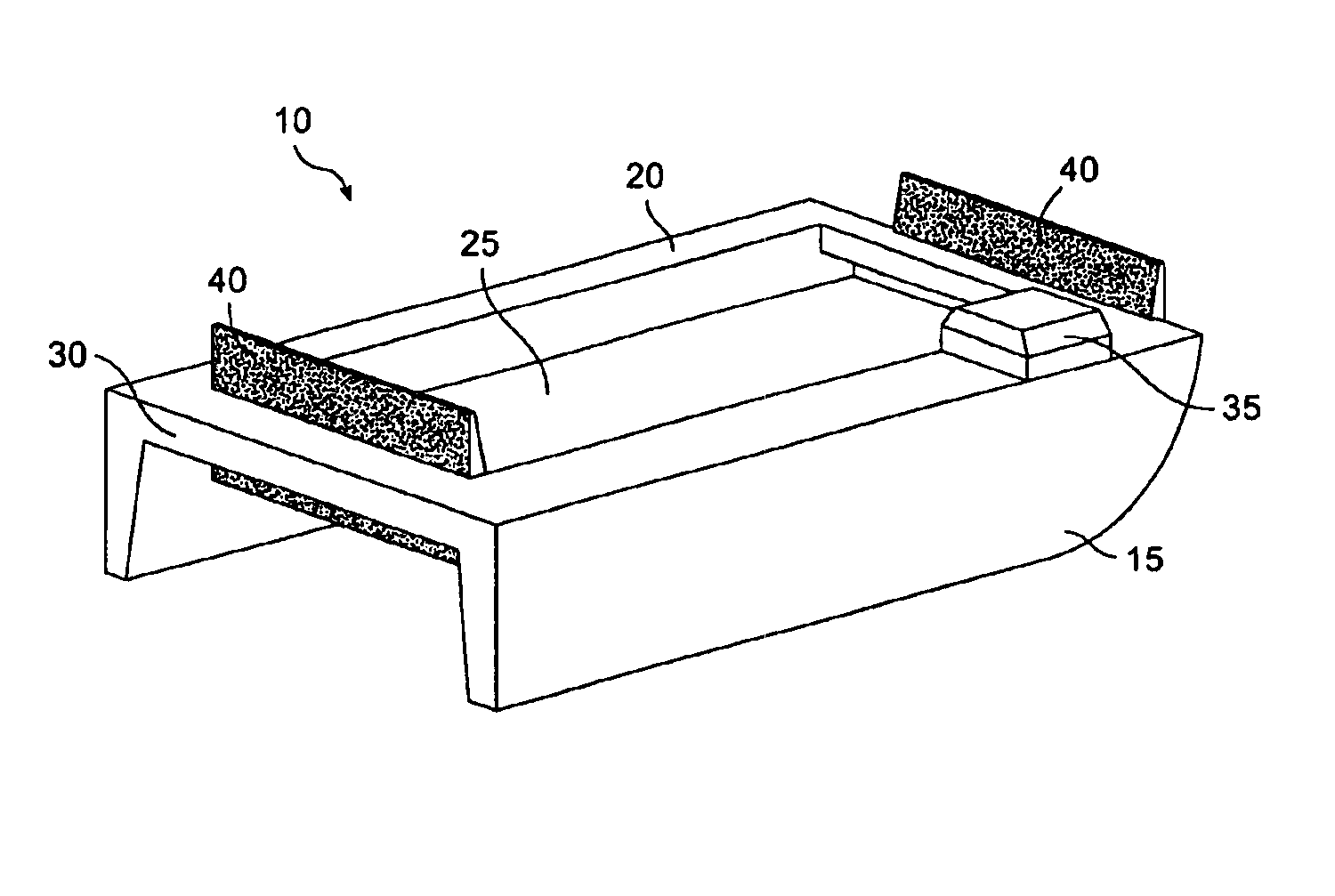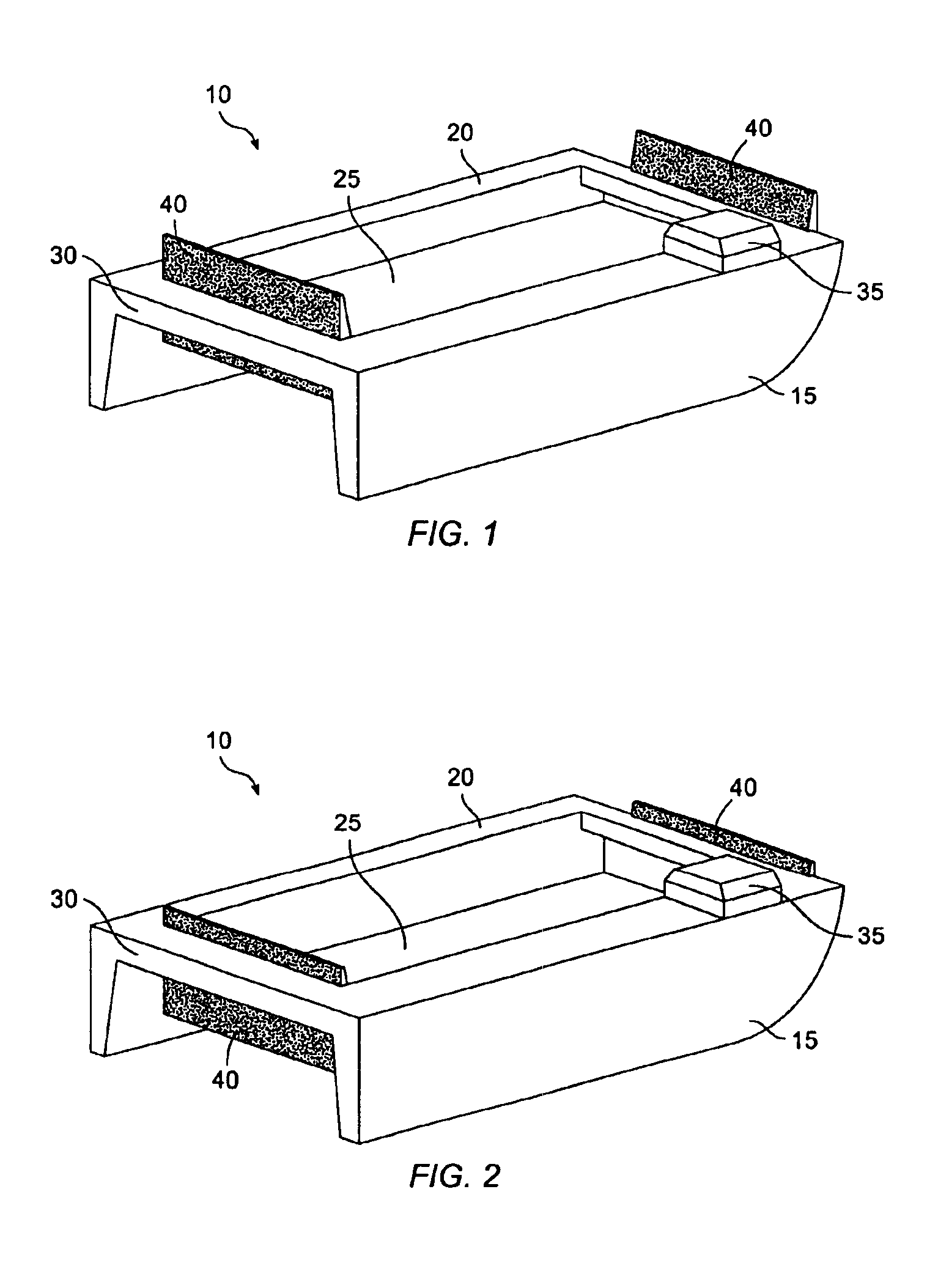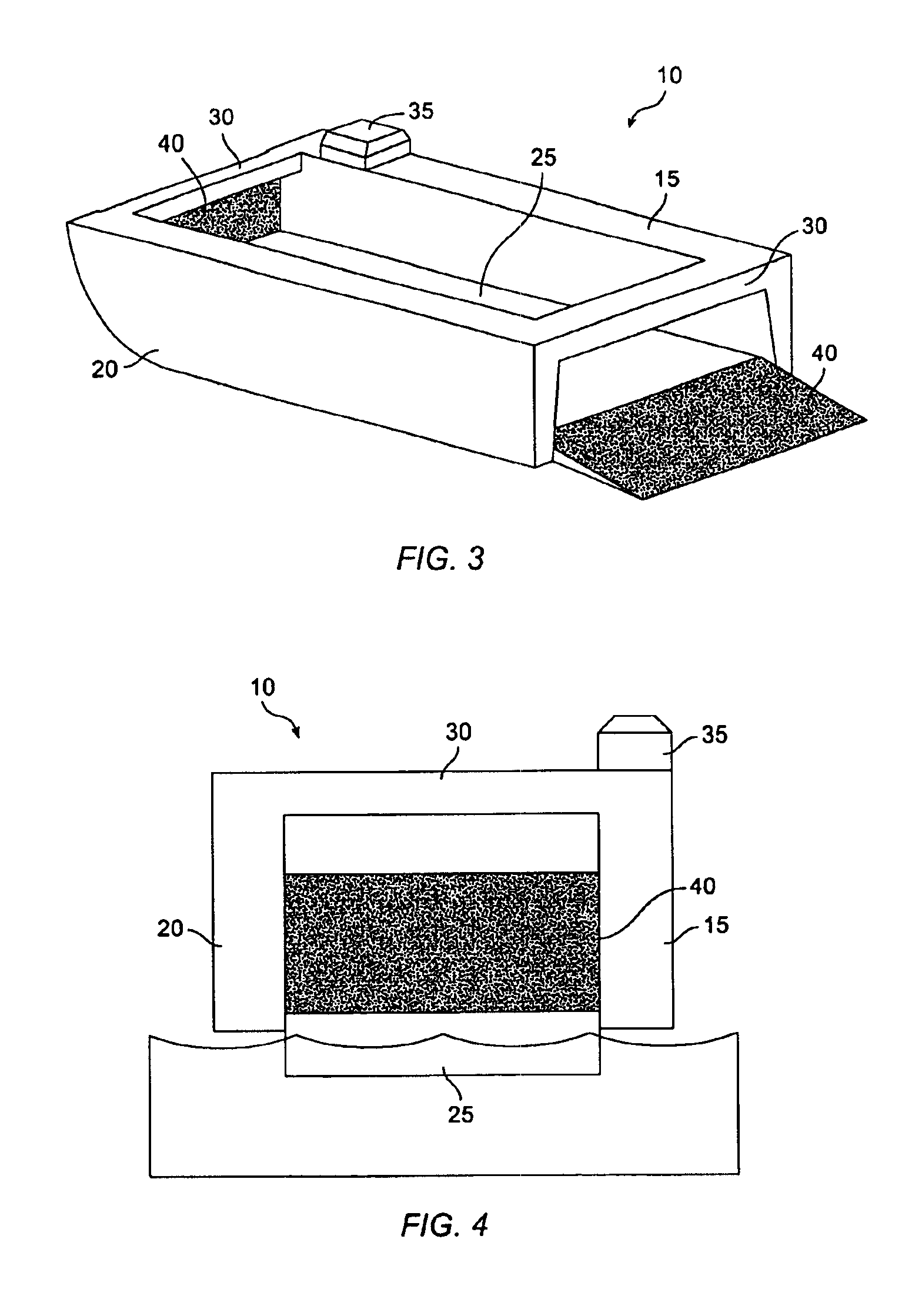Variable-draft vessel
a variable-draft, vessel technology, applied in the field of vessels, can solve the problems of poor ride, poor handling characteristics, poor seakeeping of shallow-draft vessels, etc., and achieve the effect of variable seakeeping, fuel efficiency, and increased or decreased pod dra
- Summary
- Abstract
- Description
- Claims
- Application Information
AI Technical Summary
Benefits of technology
Problems solved by technology
Method used
Image
Examples
Embodiment Construction
The present invention provides a vessel. More particularly, the present invention provides a vessel having a variable draft, such that the vessel may be configured to operate in shallow waters and in deep waters.
FIG. 1 is a simplified diagram of a vessel 10 according to an embodiment of the present invention. Vessel 10 includes a first side hull 15, a second side hull 20, a center hull 25, at least one cross support 30, and a control room 35. Various embodiments of vessel 10 also include one or more ramps 40. Cross support 30 is rigidly coupled to the side hulls to add structural integrity and stability to the vessel. While the cross support is shown as being attached to a top portion of the side hulls 15 and 20, the cross support may be attached to other portions of the side hulls.
One or more of the three hulls may be in the water or lifted out of the water to change the configuration and operational characteristics of the vessel. To change the number of hulls in the water and the ...
PUM
 Login to View More
Login to View More Abstract
Description
Claims
Application Information
 Login to View More
Login to View More - R&D
- Intellectual Property
- Life Sciences
- Materials
- Tech Scout
- Unparalleled Data Quality
- Higher Quality Content
- 60% Fewer Hallucinations
Browse by: Latest US Patents, China's latest patents, Technical Efficacy Thesaurus, Application Domain, Technology Topic, Popular Technical Reports.
© 2025 PatSnap. All rights reserved.Legal|Privacy policy|Modern Slavery Act Transparency Statement|Sitemap|About US| Contact US: help@patsnap.com



